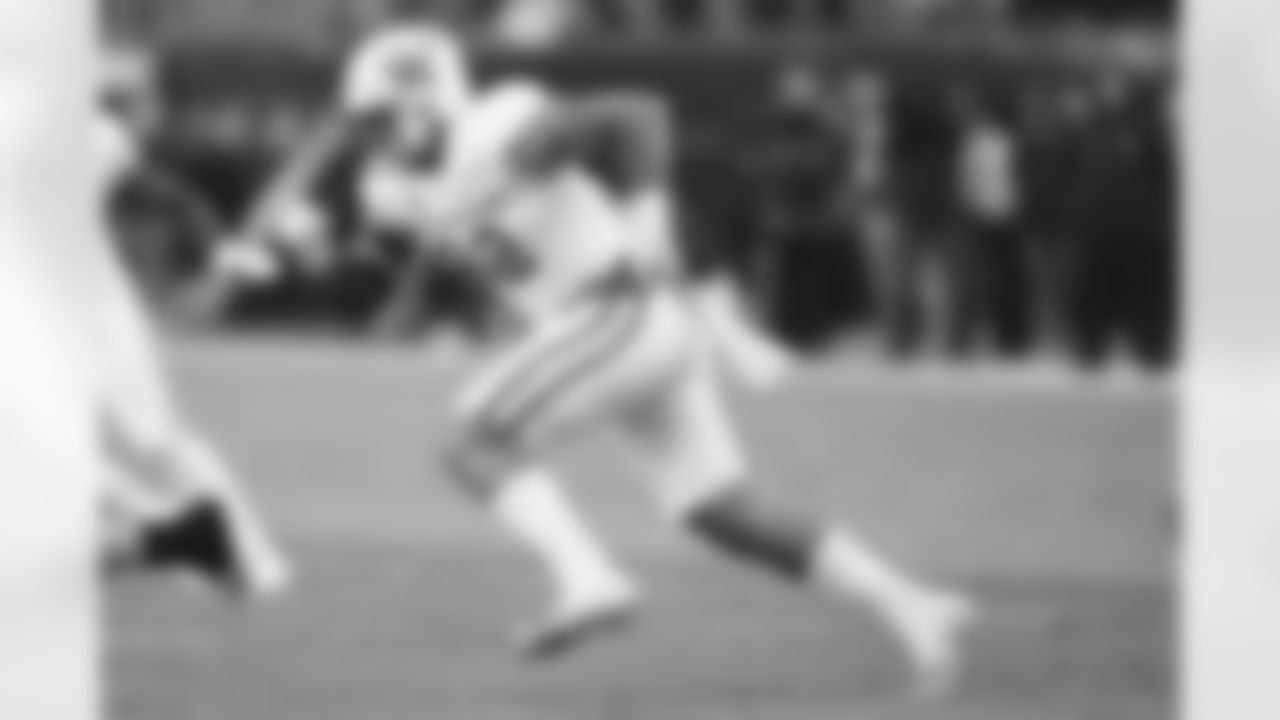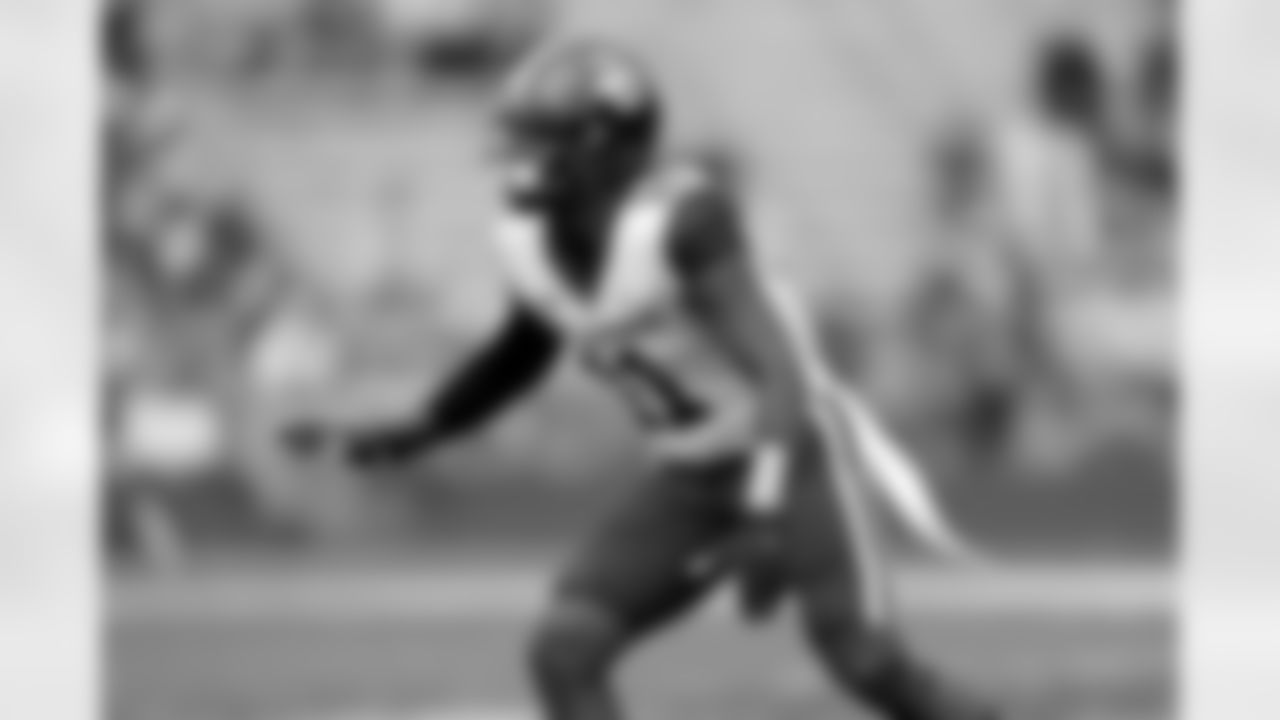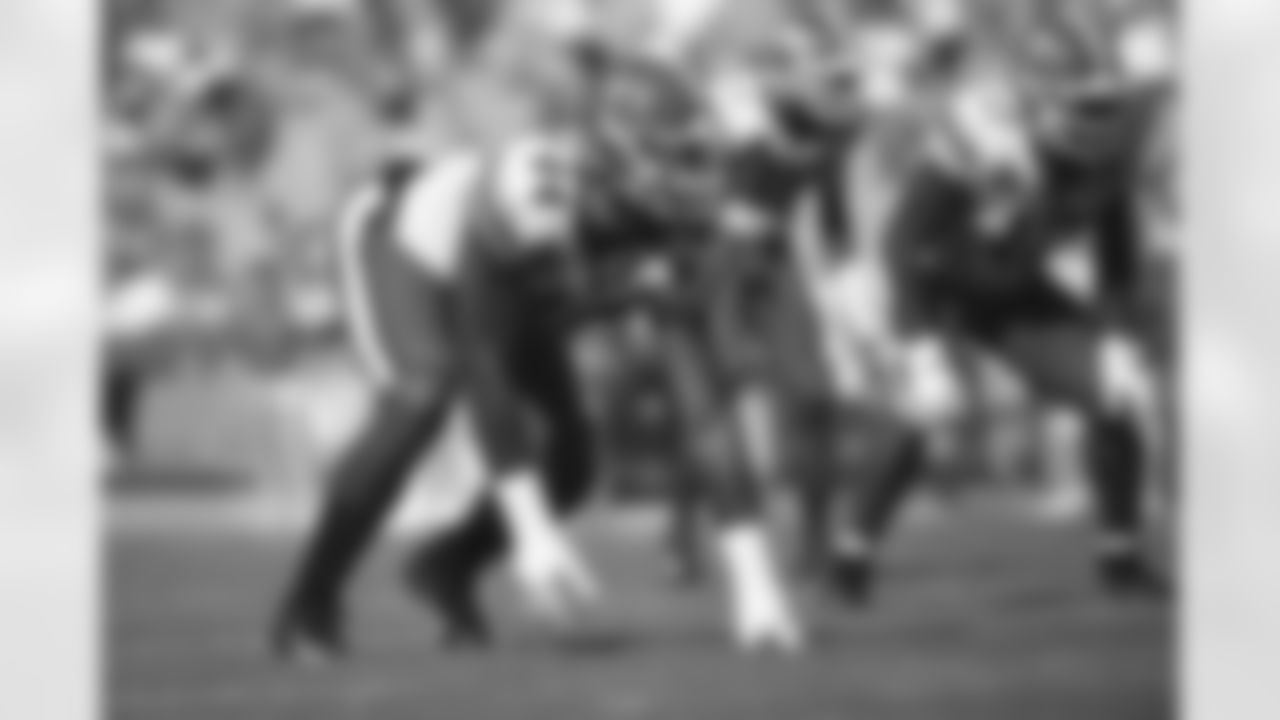The Giants.com crew is presented with four statements and must decide whether they are Fact or Fiction.
The interviews are the most important part of the NFL Combine
John Schmeelk: Fiction - It's not interviews but it is something else we don't get to see: the medicals. A player can fake his way through an interview with good coaching. No one can fake their way through a MRI image about a knee injury they had earlier in their career. A bad medical report can knock off the player from a draft board or push him down by at least a round. Nothing else at the combine will likely affect a player more than that.
Lance Medow: Fact - This is a fact by a landslide. Although many get caught up with the NFL Combine numbers, what you put on film is far more important than how you perform for a few days running around in your shorts. The two most valuable components of the combine are the interviews and gathering of medical info - both are critical. But having the chance to individually interact with a prospect and discussing a wide variety of topics provides additional perspective on a player that you can't always pick up through other avenues.
Matt Citak: Fact - Teams are only allowed to bring a limited number of prospects into their facilities for visits prior to the draft. This leaves the NFL Combine as one of the most important times for teams to be able to personally sit down with prospects before they must make decisions on who to select. Of course, registering a horrific score in one of the drills could hurt your draft stock. But if a prospect leaves teams with a sour taste in their mouth following the interviews, he could see his stock plummet. These interviews serve as an opportunity for teams to observe prospects breaking down game film, explain why they made certain decisions on specific plays and what they read from the opposing team's scheme, and more.
The 40-yard dash is the most significant drill at the NFL Combine
John Schmeelk: Fiction - This is largely position dependent, but testing that measures short-area speed and quickness is of more interest than the 40-yard dash. The 10- and 20-yard splits in the 40-yard dash are just as important as the overall time; but there's greater interest in what players do in the three-cone drill and short shuttles. You'd want to see how players change directions, start-and-stop and accelerate – that's how players separate themselves on the field.
Lance Medow: Fiction - If you're looking for a drill that best resembles and translates to what actually happens in a game, it's the 10-yard-split because that measures the short-area burst of a player. Although you can't teach speed (and that's a valuable characteristic), how often is a player running in a straight line downfield without any interruption? Instead, measuring how a player explodes in and out of breaks provide a better glimpse of his true playing speed. The 10-yard-split is a great tool to evaluate pass rushers, but it also helps with players at other positions.
Matt Citak: Fiction - The 40-yard dash probably is the most significant drill for certain positions, including wide receiver, running back and even safety. But the 20-yard shuttle is the most important drill, as it tests a players' burst, lateral quickness and acceleration. To succeed as a defender in the NFL, you must be able to diagnose a play and react very quickly. This drill quantifies a player's body control as he changes direction at a rapid pace.
NFL Media analyst Daniel Jeremiah released his final edition of the top 50 prospects in the 2022 NFL Draft.


No. 50 Logan Hall, DT, Houston

No. 49 David Ojabo, EDGE, Michigan

No. 48 Sam Howell, QB, North Carolina

No. 47 Kaiir Elam, CB, Florida

No. 46 Christian Watson, WR, North Dakota State

No. 45 Skyy Moore, WR, Western Michigan

No. 44 Nik Bonitto, EDGE, Oklahoma

No. 43 Bernhard Raimann, OT, Central Michigan

No. 42 Tyler Smith, OT, Tulsa

No. 41 Jalen Pitre, S, Baylor

No. 40 Matt Corral, QB, Mississippi

No. 39 Lewis Cine, S, Georgia

No. 38 Christian Harris, LB, Alabama

No. 37 Travis Jones, DT, Connecticut

No. 36 Kenyon Green, G, Texas A&M

No. 35 Kyler Gordon, CB, Washington

No. 34 Arnold Ebiketie, EDGE, Penn State

No. 33 Kenneth Walker III, RB, Michigan State

No. 32 Andrew Booth Jr., CB, Clemson

No. 31 Boye Mafe, EDGE, Minnesota

No. 30 Zion Johnson, IOL, Boston College

No. 29 Quay Walker, LB, Georgia

No. 28 Breece Hall, RB, Iowa State

No. 27 Tyler Linderbaum, IOL, Iowa

No. 26 Malik Willis, QB, Liberty

No. 25 Jahan Dotson, WR, Penn State

No. 24 Kenny Pickett, QB, Pittsburgh

No. 23 Devonte Wyatt, DT, Georgia

No. 22 Charles Cross, OT, Mississippi State

No. 21 Dax Hill, S, Michigan

No. 20 Trevor Penning, OT, Northern Iowa

No. 19 Treylon Burks, WR, Arkansas

No. 18 George Karlaftis, EDGE, Purdue

No. 17 Nakobe Dean, LB, Georgia

No. 16 Jameson Williams, WR, Alabama

No. 15 Chris Olave, WR, Ohio State

No. 14 Trent McDuffie, CB, Washington

No. 13 Devin Lloyd, LB, Utah

No. 12 Derek Stingley Jr., CB, LSU

No. 11 Jordan Davis, DT, Georgia

No. 10 Kayvon Thibodeaux, EDGE, Oregon

No. 9 Jermaine Johnson II, EDGE, Florida State

No. 8 Evan Neal, OT, Alabama

No. 7 Drake London, WR, Southern California

No. 6 Travon Walker, EDGE, Georgia

No. 5 Kyle Hamilton, S, Notre Dame

No. 4 Garrett Wilson, WR, Ohio State

No. 3 Ickey Ekwonu, OT, North Carolina State

No. 2 Ahmad "Sauce" Gardner, CB, Cincinnati

No. 1 Aidan Hutchinson, EDGE, Michigan
The NFL Combine is the most crucial event for prospects ahead of the NFL Draft
John Schmeelk: Fact - The totality of the event makes it the most important. Every NFL decision maker and coach is there watching - players interview with a lot of teams and medical reports are done. The prospcts get to compete on an even playing field against others in the draft class. There is no other event before the draft that includes underclassmen where all these things happen at once.
Lance Medow: Fiction - This depends on how many activities the prospects take part in over the course of that event. Most wait until their pro days to actually demonstrate their vast array of talents. The interviews can help players' causes at the NFL Combine, but pro days may provide a bit more substance in terms of activity on the field. Although pro days are considered more favorable for prospects given the familiarity of the environment, it's far more valuable to observe some activity rather than viewing non-participant attendees at the NFL Combine.
Matt Citak: Fact - Assuming this entails prospects participating in all of the drills, then this is an easy one. The festivities in Indianapolis offer the most level playing field when it comes to all of the drills that are part of the pre-draft process. Sure, many of the players will re-do some of the drills at their respective pro days, but NFL teams know that they must take these latter results with a grain of salt, as they the results tend to favor players on their home turf. Plus, the NFL Combine allows teams to sit down with prospects face-to-face and ask them whatever questions they want during their 15-minute interview sessions.
John Ross' 4.22 seconds in the 40-yard dash is the most unbreakable NFL Combine record
John Schmeelk: Fiction - Eventually, someone is going to break that 4.2 barrier. It might not happen this year, but it will happen eventually. Since 2008, four players have run 4.27 or better, so let's go with Stephen Paea's 49 reps on the bench press. No one else has lifted more than 45, and no one else has topped 42 since 2012. It's a much bigger gap from the record to second place than in the other events.
Lance Medow: Fact - Chris Johnson ran a 4.24 in 2008 and most didn't think that mark would be broken and then a decade later, John Ross moved atop the list. So never say never. Yet when you use the label "most unbreakable" and consider the track record of the participants, Ross has the best cushion. To put things in perspective, Olympic gold medalist Usain Bolt was 32 when he matched Ross' mark at the Super Bowl Experience a few years ago. Bolt is an absolute freak and that's what it would take to beat Ross.
Matt Citak: Fact - In 2011, Ohio State's Stephen Paea set an NFL record with 49 reps on the bench press (225 pounds), four more than the next-best effort. The NFL officially recognizes Paea's 49 reps as the most in NFL Combine history, but Eastern Kentucky defensive tackle Justin Ernest set an unofficial mark with 51 reps in 1999. Paea's mark was impressive, but Ross gets the nod for the unbreakable record. After Ross, the next-fastest 40 time is 4.24 seconds (Rondel Menendez and Chris Johnson).



















